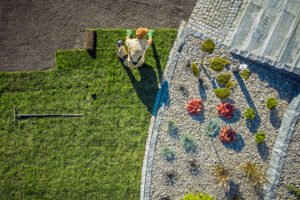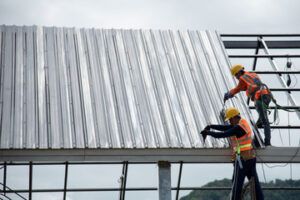Landscape Design Wellington is the process of transforming outdoor spaces into functional and aesthetically pleasing environments. It involves a combination of art, science, and environmental awareness to create harmonious and sustainable landscapes that reflect the needs and preferences of the property owner while enhancing the natural surroundings.

A well-designed landscape improves not only the visual appeal of a property but also its overall value and functionality. Careful planning and execution are essential to achieving a balanced, attractive, and practical outdoor space that serves various purposes, including relaxation, entertainment, and ecological balance.
The foundation of effective landscape design lies in understanding the natural characteristics of the site. Soil composition, topography, climate, and existing vegetation play a significant role in determining the types of plants and materials that will thrive in the environment. Assessing these factors allows landscape designers to make informed decisions about plant selection, drainage systems, and the placement of structures such as patios, walkways, and water features. A thorough site analysis also helps identify potential challenges, such as poor soil quality, inadequate sunlight, or water runoff issues, which must be addressed to ensure the long-term success of the landscape.
One of the core principles of landscape design is creating a sense of unity and balance within the space. Unity is achieved by selecting plants, materials, and design elements that complement each other and create a cohesive visual theme. Balance involves distributing visual weight evenly throughout the landscape, ensuring that no single element dominates the space. Symmetry and asymmetry are often used to achieve balance; symmetrical designs create a formal and orderly appearance, while asymmetrical designs offer a more relaxed and natural feel. Repetition of colors, textures, and shapes further enhances unity and balance within the design.
The use of focal points is another essential element of landscape design. Focal points draw the eye to specific areas of the landscape, creating visual interest and guiding movement through the space. A focal point can be a striking plant, a sculpture, a water feature, or even a carefully placed tree or shrub. The placement and scale of the focal point should harmonize with the surrounding elements to create a natural flow and avoid overwhelming the viewer. Well-placed focal points help define the structure of the landscape and provide a sense of direction and purpose.
Color, texture, and form are powerful tools in landscape design that influence the overall mood and atmosphere of the space. Color is used to create contrast and harmony, with warm colors such as reds, oranges, and yellows stimulating energy and activity, while cool colors such as blues, greens, and purples evoke a sense of calm and relaxation. Texture adds depth and interest to the landscape, with coarse textures like rough bark or large leaves contrasting with finer textures such as delicate grasses and soft flowers. Form refers to the shape and structure of plants and design elements; upright, rounded, and cascading forms contribute to the overall composition and flow of the landscape.
Functionality is equally important in landscape design. Outdoor spaces should be designed to accommodate the needs and activities of the property owner while maintaining comfort and accessibility. Pathways and walkways should provide clear and easy navigation through the space, with materials that are safe and durable. Seating areas, dining spaces, and play areas should be strategically positioned to take advantage of shade, privacy, and natural views. Efficient use of space ensures that the landscape serves its intended purpose without feeling cluttered or disorganized.
Sustainability is becoming an increasingly important aspect of modern landscape design. Incorporating native plants, drought-tolerant species, and low-maintenance materials reduces the need for excessive watering, fertilizing, and chemical treatments. Proper irrigation systems, such as drip irrigation, help conserve water by delivering moisture directly to the roots of plants, reducing waste and runoff. Rain gardens and permeable paving materials improve drainage and prevent water accumulation, protecting the landscape from erosion and flooding. Composting and mulching enhance soil health and reduce the need for synthetic fertilizers, promoting a more environmentally friendly landscape.
Seasonal interest is a key consideration in landscape design. A well-designed landscape should provide visual appeal and functionality throughout the year. This can be achieved by selecting a variety of plants that bloom at different times of the year and incorporating evergreen species that maintain their color and structure even in colder months. Deciduous trees and shrubs provide shade in the summer and allow sunlight to filter through in the winter, contributing to natural temperature regulation. Incorporating hardscape elements such as stone walls, pergolas, and lighting ensures that the landscape remains inviting and functional even when plant life is dormant.
Privacy and screening are important factors in creating a comfortable and secure outdoor environment. Hedges, trees, and trellises can be used to create natural barriers that block unwanted views and reduce noise from nearby roads or neighboring properties. Vertical plantings, such as climbing vines and tall grasses, add height and texture while enhancing privacy. Fences and walls provide additional security and define the boundaries of the space, contributing to a sense of enclosure and intimacy. Thoughtful placement of these elements ensures that the landscape remains open and welcoming while offering the necessary level of privacy.
Lighting plays a crucial role in enhancing the beauty and functionality of a landscape. Well-placed lighting fixtures highlight architectural features, pathways, and focal points while creating a warm and inviting atmosphere. Solar-powered and energy-efficient LED lights are popular choices for sustainable outdoor lighting solutions. Soft, ambient lighting enhances the mood of seating and dining areas, while brighter task lighting improves safety and visibility along walkways and entrances. Incorporating lighting controls and timers allows for easy adjustment and energy conservation.
Water features add a dynamic and calming element to landscape design. Fountains, ponds, and waterfalls create soothing sounds and visual interest while attracting birds and beneficial wildlife. The placement of water features should complement the overall design and flow of the landscape, ensuring that they integrate naturally with the surrounding elements. Proper maintenance of water features, including filtration and water circulation systems, prevents algae buildup and ensures water clarity. The reflective surface of water enhances the perception of space and light, contributing to a tranquil and harmonious atmosphere.
Edible landscaping combines aesthetics with functionality by incorporating fruit-bearing trees, vegetable gardens, and herb beds into the overall design. Raised garden beds, trellises, and container gardens allow for efficient use of space and easy access to fresh produce. Mixing edible plants with ornamental species creates a visually appealing and productive landscape. Crop rotation, soil enrichment, and pest management practices ensure the health and productivity of edible landscapes while maintaining ecological balance.
Maintenance is a vital aspect of preserving the beauty and functionality of a landscape. Regular pruning, weeding, and mulching keep plants healthy and vibrant while preventing overgrowth and competition for resources. Seasonal tasks, such as leaf removal and winterizing irrigation systems, protect the landscape from damage and ensure its readiness for the next growing season. Monitoring soil health and adjusting fertilization and watering schedules according to weather patterns help maintain optimal growing conditions. Investing in professional maintenance services or developing a detailed care plan ensures that the landscape remains in peak condition year-round.
Landscape design is an evolving art and science that reflects the intersection of human creativity and natural beauty. By understanding the principles of balance, unity, color, texture, and form, designers create outdoor spaces that enhance both the aesthetic and functional qualities of a property. Thoughtful consideration of environmental factors, sustainability, and seasonal changes ensures that the landscape remains vibrant and resilient over time. A well-designed landscape enriches the lives of its inhabitants, provides a sanctuary for relaxation and enjoyment, and contributes to the overall health and harmony of the natural environment.

